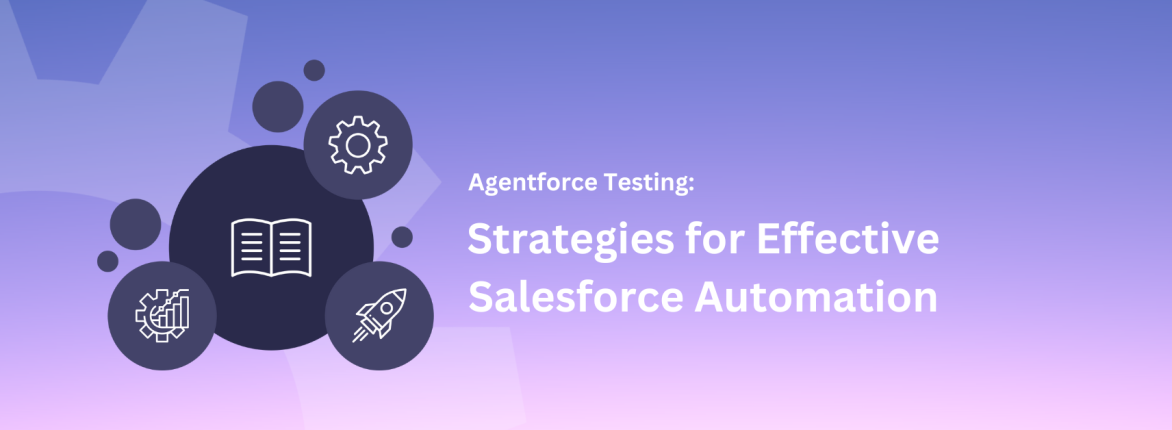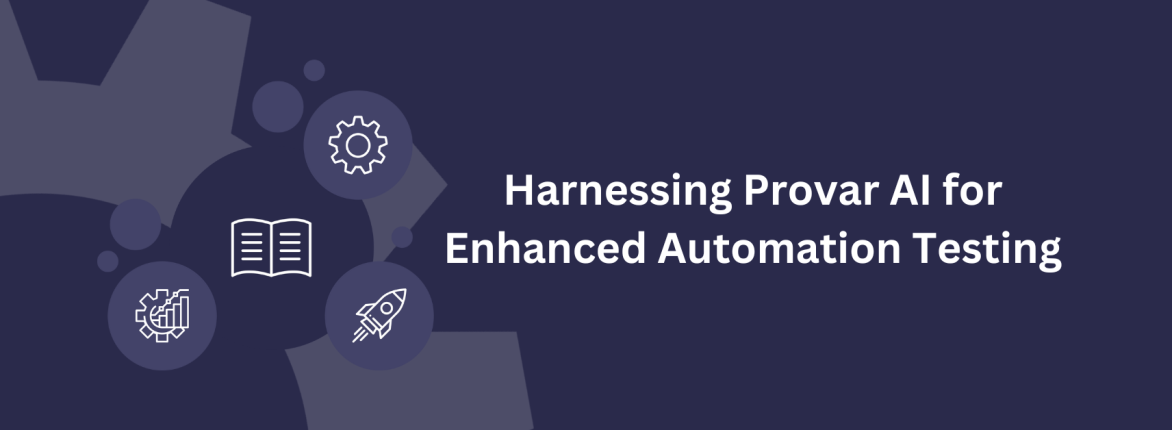If you manually test your Salesforce environment to mitigate risk, you’re already off to a good start! Ensuring the quality and functionality of mission-critical applications within your Salesforce ecosystem is a must, and manual testing can get the job done for smaller, less complex businesses.
However, while manual testing has its place, it becomes less ideal as organizations scale and their Salesforce ecosystem grows more complex. This is where automated testing steps in, offering a more efficient and effective approach to running tests accurately and increasing overall quality.
Are you ready to move to an automated testing strategy, or are you curious if it’s the right time for your organization to consider taking this step? If so, you’re in the right place!
The Necessity of Salesforce Testing
Testing your Salesforce organization is no longer a nice-to-have — it’s necessary to mitigate risk and maintain customer satisfaction. If you find yourself solely at the manual testing stage, take a deep breath; as mentioned above, you’re already on the right track. Manual testing, involving human intervention at every step, is suitable for smaller, less complex businesses. However, as your system grows, manual testing becomes time-consuming, less efficient, and prone to human error.
On the other hand, automated testing utilizes software tools to build tests, automate the testing process, and optimize for the future. It is faster, more efficient, and less error-prone, making it the preferred choice for evolving and scaling businesses. Manual testing has a glass ceiling regarding scalability — with automated testing, the sky’s the limit.
The Advantages of Automated Testing for Evolving Businesses
Automated testing offers significant advantages, especially for businesses operating on Salesforce. It makes a marked difference in speed and efficiency. As businesses evolve and introduce new features and updates to their Salesforce environment, the speed and efficiency of testing become critical. Automated testing allows for faster test execution compared to manual testing, enabling organizations to identify issues earlier in the development cycle and achieve faster time-to-market for their Salesforce applications.
Here are some advantages of automated testing for evolving businesses.
Reliability and Consistency
One of the key advantages of automated testing is its reliability. Eliminating human error, automated tests follow predefined scripts precisely, ensuring consistent and reliable results. This reliability is crucial, especially when testing complex integrations and workflows within the Salesforce ecosystem.
As businesses scale, the number of test cases increases exponentially. Managing a growing number of test cases manually becomes impractical and time-consuming. Automated testing offers scalability, allowing organizations to easily scale their test suite to accommodate the expanding Salesforce environment. This ensures effective testing, even as system complexity and test coverage requirements increase.
Automated testing is also more consistent and crucial for regularly managing different releases and updates. Ideal for regression testing, it allows organizations to validate that previously identified issues have been resolved and are not reintroduced with new releases.
Cost-Effectiveness
While setting up automated testing frameworks and creating test scripts requires an initial investment of time and resources, it is more cost-effective in the long run. As the scale of the Salesforce ecosystem increases, the effort required for manual testing grows exponentially. Automated tests significantly reduce the time and resources spent on repetitive and labor-intensive manual testing tasks. The initial investment pays off through increased productivity, accelerated testing cycles, and reduced long-term maintenance costs.
How to Start Moving from Manual to Automated Testing
If the information above has piqued your interest and you think you might be ready to start moving from manual to automated testing, here are the steps you should take. For more detailed information, download our free white paper, Transitioning from Manual to Automated Salesforce Testing: Your Complete Guide!
1. Evaluate Your Testing Needs
Begin by assessing your existing testing processes. Identify areas that can benefit from automation by evaluating the frequency of testing, the complexity of test cases, and the level of repetition. Focus on high-value test cases that are time-consuming or prone to human error. Write down questions or proof of value exercises for insights into these areas.
2. Select a Test Automation Solution
Research and choose a test automation solution that best suits your Salesforce needs. Demo multiple solutions to consider factors like ease of use, training, scalability, future-proofing, security, support, and pricing. Consider both the product and the vendor — the best solution scores high in both areas.
3. Implementing Your New Solution
After selecting a test automation solution, work closely with your vendor to ensure a strong foundation. Reflect on goals, develop a comprehensive test strategy, and identify types of tests to automate. Establish clear communication and collaboration lines between teams involved in QA. Create a training plan for the effective application of automation best practices.
Note: Test automation is part of a comprehensive quality strategy; spend time during implementation to identify gaps.
4. Implementing Best Practices for Automation
As you transfer manual tests to automated processes, follow these best practices:
- Define steps and assertions for each manual test
- Pinpoint the environments your tests will run in and ensure clear parameters
- Design tests for reusability across different orgs, languages, and user profiles
- Initiate mapping for manual vs. automated tests, noting any exceptions
- Create a useful report for test execution results, avoiding unnecessary jargon
5. Evaluating and Adjusting for Success
Review your goals at the beginning of your move to automated testing. Evaluate the extent to which automated tests cover Salesforce org functionalities. Identify gaps and prioritize efforts to fill them with additional automated tests. Establish a culture of continuous improvement, regularly evaluating criteria and implementing iterative improvements.
Ready to Take the Plunge?
You shouldn’t fear the transition from manual to automated Salesforce testing. If your organization is ready for it, you can experience great benefits across your entire pipeline. It is not just a step forward—it’s a leap toward ensuring your Salesforce applications’ quality, reliability, and scalability.
If you’ve read this far, it’s probably time to embrace automation and elevate your testing strategy to meet the demands of your dynamic business environment. The benefits are substantial, and the future of testing is automated — why not start today?
Ready to take the next step? Connect with a Provar expert today to learn more about how an automated testing strategy can help you!










